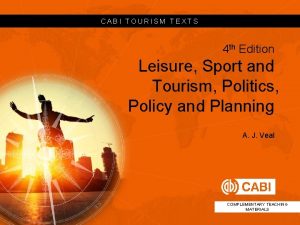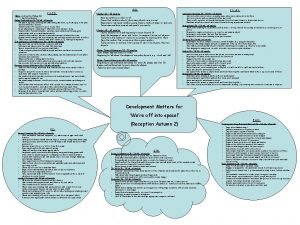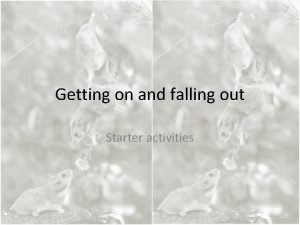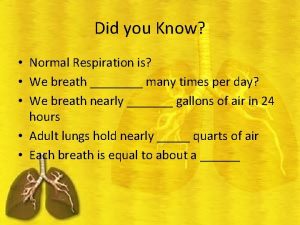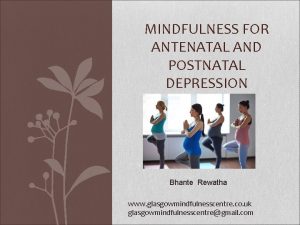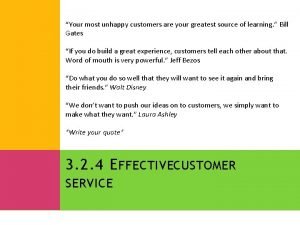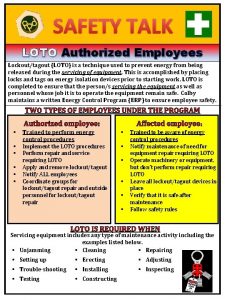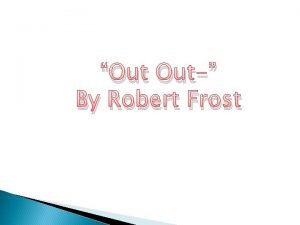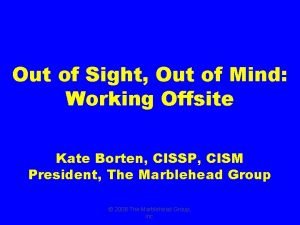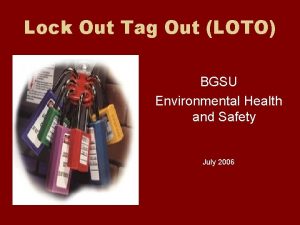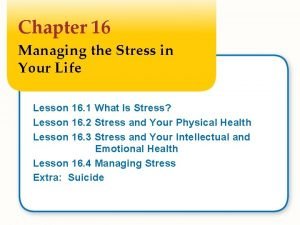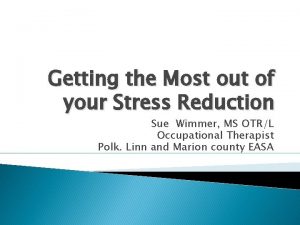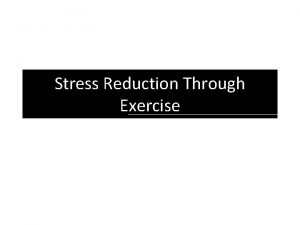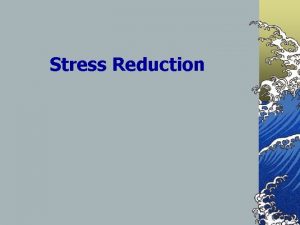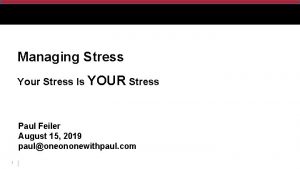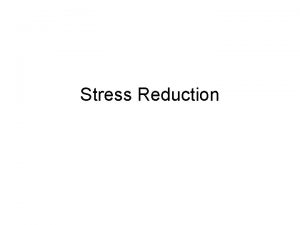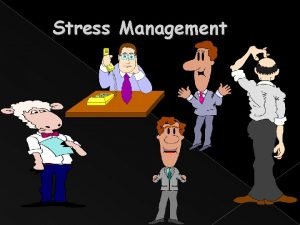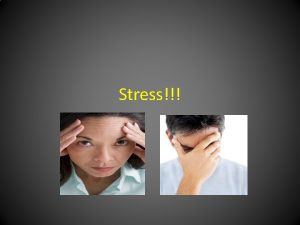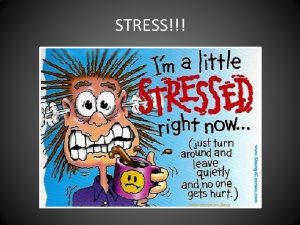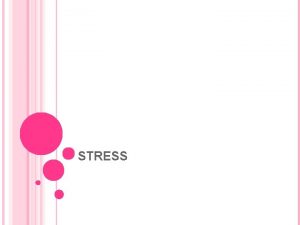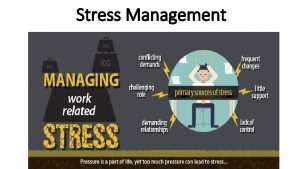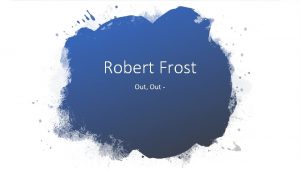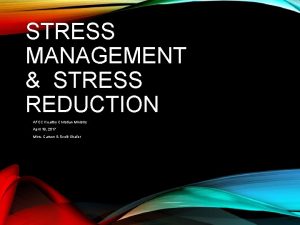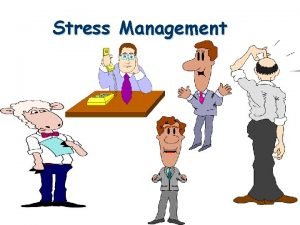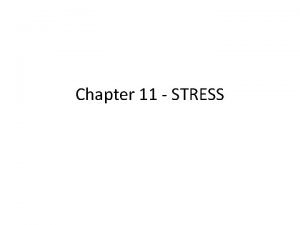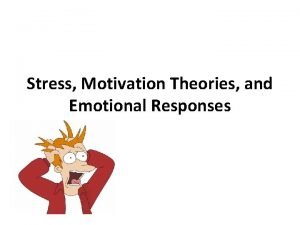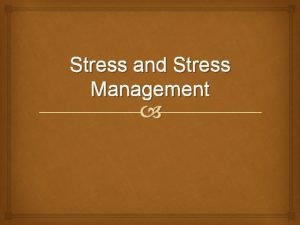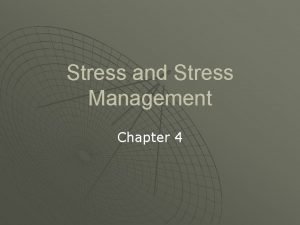Getting the Most out of your Stress Reduction

































- Slides: 33

Getting the Most out of your Stress Reduction Sue Wimmer, MS OTR/L Occupational Therapist Polk. Linn and Marion county EASA

Stress

Stress � Every day our bodies are bombarded by stress. � Some stress is good and helps us to learn, be creative and survival. ◦ “Good Stress” keeps us alert and on our toes to paying attention, using our thinking brains, be creative and looking at options. ◦ There is a point where good stress becomes too much and we become overwhelmed and stressed.

Levels of Stress

Stress �Stress in our lives:

Stress �Today are lives are always “on” ◦ Technology- social media ◦ We don’t slow down ◦ Working harder ◦ Don’t get away on vacations ◦ “New norm” ◦ Over worked ◦ All around us – noise, smells, movement, etc.

Stress � We function with 3 brains: ◦ Survival/Action ◦ Emotional ◦ Thinking

Stress � Our survival/action brain in the lowest and the most primitive. � It responds to stimuli from environments and usually reactions occur without thinking. These are reflexive or built in for safety and survival. ◦ If we see a bear, our bodies automatically go into fight or flight: �Our eyes widen to take in more information �The blood goes to our muscles for fuel to run �Our heart beat speeds up to get more blood to the body �Our breathing increases to get more oxygen in and carbon dioxide out

Stress � These are natural reactions to help us to keep safe. ◦ If we have to fight or run we are better prepared ◦ These interactions occur at a basic neurological level and do not ever reach the level of thinking brain until seconds later. They are unconscious reactions/responses ◦ These are activated by fear or discomfort

Survival brain �Key �Our to survival and basic functioning survival brain also helps to regulate our hunger, respiration, elimination, circulation and other body functions. �It also regulates our alert and calm states �It uses sensory input to know how to react and respond �Brain stem and cerebellum

Limbic brain � The next brain is the limbic or emotional brain ◦ Our emotional brain helps us to put feelings to our experiences ◦ Our limbic brain is activated by love or fear ◦ It helps us to make connections with others ◦ It interacts with others within the first 10 seconds of seeing them. That sets the tone of the interaction for the next 6 -8 hours. ◦ If we see someone who evokes fear in us then we will move back down into the survival brain

Thinking Brain � The highest level of the brain, is the thinking brain � It provides us with problem solving, analysis, connections, compassion, curiosity, creativity and joy. � When we are in this brain we can come up with alternative solutions, new ideas to try and are able to work things out. � We are able to self regulate ourselves and our emotions, do planning and problem solve without drama.

Stress � Whenever we get into a situation where our stress response is activated then we go back to our survival brain and not our thinking brain. We become self centered, whine, blame, complain, and lose our problem solving. � We become very focused on our self preservation whether physical or emotional.

Stress � Sensory ◦ A). input comes in and is analyzed as: Something that is a threat to us ◦ B). Something, probably new that we need to pay attention to ◦ C). Something that we have experienced before and we do not need to pay attention to and never reaches the level of the thinking brain.

Stress � If it is something we need to pay attention to or threatens us, our survival brain is activated and stress hormones flood the bloodstream. � The nervous system is alerted and the mechanisms go to work: ◦ ◦ ◦ Eyes open Muscles prepare Heart rate raise Breathing increases Digestion stops

Stress � We � Or either fight to protect ourselves � Flee � Or � If – run away the stress is too much we can “freeze. ” We curl up in a ball and pretend we are dead. � You also cannot “over ride” this reaction with your thinking brain once you are in this state.

Stress Fight or flight, helps to burn off the chemicals that are in your system and bring your nervous system back to a pre-stress state. In the past this physical activity would be a healthy way to get back to a pre-stress state and clear the hormones out of our system. Today our stresses are not physical and we do not get the chance to burn off our stress. Traffic jams, deadlines, expectations, arguments, etc. So we need to learn new ways to burn off the stress.

Stress � You can become stressed by other things, such as being hungry, tired or sleep deprived. � You cannot think, listen or learn if in biological stress. � Brain also needs glucose, water and oxygen and if it does not get it, it won’t work. � If the body is stressed it sends the glucose from the brain to the gut to make fuel to run rather than think.

Stress �In order to overcome the stress response, you need to use your body and nervous system to calm yourself �You can tell yourself to calm down, but does not work, have to use the nervous system to calm �You need to go back to the survival brain, to calm it

Biological stress break

Stress reduction � Breathing is # 1 way to calm self � Within 90 seconds you can calm your system and get out of fight and flight- if done right! � You need to access all lobes of the lungs and the Vagus nerve to turn off the stress response= belly breathing � By accessing the lower lobes of the lungs you trigger the calming messages and they get spread throughout the body

Belly Breathing � Need to see belly move � Best to do lying down � Lots of ways to learn ◦ 4 X 4 ◦ 4 in-2 hold-6 out You Tube Apps: deep breathing, relaxation, belly breathing Virtual Hope Box- free, lots of things to use Breathe 2 relax- lots of instruction and talks about stress Relax. Deep. Breathe – Relax Lite- meditation and breathing

Other ways to use breathing � Help to go to sleep, 6 -7 deep breaths when get in bed � First thing in the morning to get blood flowing � When in a stressful situation – late, get yelled at, have an argument, stuck in traffic, nothing is working right � In a surprise situation, take 2 deep breaths before say anything � Others reflect your breathing, so if you are calm and breathing slowly will keep them calm also.

Movement � Move to relax � Proprioception =heavy work with the joints and muscles � Walk = bilateral brain functioning and breathing � Stretching � Rhythmic exercises- running, walking, swimming, rowing, � Yoga/Tai. Chi – moving and stationary, breathing, flexibility, stretching, strength and balance � Massage � Dance –with music and a partner

Music � Many components to music: ◦ Tempo ◦ Tone ◦ Rhythm ◦ Harmonies ◦ Melody Effects many areas of the brain Two parts to music; hearing/action Can effect the heart rate, breathing, brain waves

Music � Rise with music � Sing with music � Instrumental music � Mantra � Move with music � Use music � Music is very individual and personal. Try a variety to see what works for you.

Mind Body Connection ◦ Have to be in thinking brain to do these ◦ Meditation – thickens cortex- emotional regulation, thinking parts of brain �Hippocampus- learning and memory improves �Amygdala- shrinks= fight and flight center of brain ◦ Mindfulness –nonjudgmental awareness of present moment without cognitive elaboration ◦ Guided Imagery – use as many senses as possible ◦ DBT

Laugh � Stimulation goes to many organs and relives stress response � Soothes tension/relieves stress � Makes us feel better � Contagious � Decreases stress hormones � Increases immune system � Releases endorphins � Lasts up to 45 minutes

Laugh

Social Connections �Connect with meaningful and uplifting people at least one time per day �Celebrate accomplishments �Gratitude –journal, build into daily routines �Joy – do something you enjoy �Compassion

Using higher brains � To change our thoughts: ◦ CBT � Use the brain to learn the triggers and how do block them or change your thinking before the stress hits. � Learn the triggers so can use higher level stress reduction before in the situation

Preventative Care/Well being �Self care �Have fun �Exercise �Eat Healthy, whole foods �Start day with 3 -6 deep breaths �Drink water

Commitment � Pick ◦ 1). ◦ 2). ◦ 3). 3 things you would like to try; ◦ How can you build them into your everyday life without making major changes? ◦ www. robinrose. com ◦ www. getselfhelp. co. uk
 The secret to getting ahead is getting started
The secret to getting ahead is getting started 3.05 getting the most for your money
3.05 getting the most for your money One direction songs with alliteration
One direction songs with alliteration Seal getting on and falling out
Seal getting on and falling out Getting on and falling out
Getting on and falling out Getting wind knocked out of you
Getting wind knocked out of you Phrenology
Phrenology Mbct
Mbct True fracture strain
True fracture strain What is the definition of axial stress
What is the definition of axial stress Chapter 10 stress responses and stress management
Chapter 10 stress responses and stress management Put your right foot in put your right foot out
Put your right foot in put your right foot out The greatest source of ideas for new products is
The greatest source of ideas for new products is Give us your hungry your tired your poor
Give us your hungry your tired your poor Who says put out the light and then put out the light
Who says put out the light and then put out the light Robert frost poems
Robert frost poems Outta sight outta mind quotes
Outta sight outta mind quotes Analysis of out out
Analysis of out out Loto safety talk
Loto safety talk Out out robert frost
Out out robert frost Time
Time Matthew 11:28-30 message
Matthew 11:28-30 message Lock out tag out pictures
Lock out tag out pictures Out, damned spot! out, i say!
Out, damned spot! out, i say! Henri fayol was a social scientist
Henri fayol was a social scientist Makna out of sight out of mind
Makna out of sight out of mind Log out tag out deutsch
Log out tag out deutsch Chapter 16 managing the stress in your life
Chapter 16 managing the stress in your life Hát kết hợp bộ gõ cơ thể
Hát kết hợp bộ gõ cơ thể Ng-html
Ng-html Bổ thể
Bổ thể Tỉ lệ cơ thể trẻ em
Tỉ lệ cơ thể trẻ em Voi kéo gỗ như thế nào
Voi kéo gỗ như thế nào Tư thế worm breton
Tư thế worm breton

